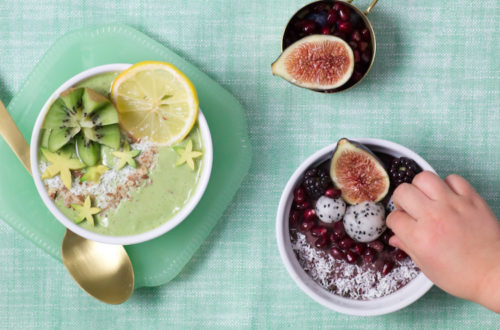Hello all. Happy belated Labor Day and welcome back to reality.
I woke up this morning ravenous for bagels. I also had a very random and nostalgic craving for Monti’s Roman Bread. I waited tables there in college and have been known to eat entire baskets of the stuff in one sitting.
This train of thought led me to reflect on my general obsession with breads of all shapes, sizes and flavors. For example …
Dave’s warnings about filling up on the bread basket when we eat out are futile. Don’t think I won’t buy a baguette and eat it with butter for breakfast, lunch and dinner. My last Trader Joe’s run yielded a glutinous bounty of sourdough, challah, bake-at-home french bread and bagels (and I was only a little ashamed). I wouldn’t last five hours on the Atkin’s diet.
I digress. The point is, all of these carb-filled daydreams brought me to a startling and embarrassing realization: I’ve never made bread. There, I said it. Phew. That feels better.
I think it’s because I can barely stand to let a loaf sit in my grocery bag for more than a millisecond before ripping it out and smearing it with butter. In fact, sometimes I can’t even be bothered to slice it or spread the butter on with a knife. So how could I possibly have the patience to bake it my own? Plus, I have to admit that something about the task has always seemed daunting.
That’s all changing this week as I attempt a carbohydrate crash course by baking a different bread each day. Without a bread maker. Break out the active yeast and let’s get going.
Basic Bagels
(Recipe adapted from bagelrecipes.net)
You’ll need:
2 eggs
1 egg white
1 potato, peeled and quartered
1 packet of active dry yeast (7 g)
4 cups of high-gluten or bread flour
¼ cup vegetable oil
1 ½ tablespoons of sugar, divided
½ tablespoon of salt
cornmeal (for pan)
First, some bagel tips. The reason I am putting these at the beginning is because, if you’re anything like me, chances are you’d skip over them otherwise:
- When you dissolve the yeast in the water, be sure the water is about 110 degrees. Any hotter and the yeast will die, any colder and it will not develop properly.
- Use high-gluten flour. I used all-purpose flour and the finished products weren’t as “bagely” as I thought they should be. The high gluten flour apparently makes them chewier.
- Try adding two tablespoons malt syrup. It wasn’t in the recipe I used, but supposedly it adds a more authentic look and flavor.
- When in doubt, knead it out. I didn’t knead my dough enough, so my bagels weren’t as puffy and chewy as I would like—kneading develops the gluten and allows the dough to rise. The picture below shows how mine fell a little flat:
First, boil a peeled and quartered potato in water for 15 minutes. Toss (or save for later?) the potato. Let 1/3 cup of the potato water cool to 110 degrees and then mix in the yeast, letting it dissolve. Set this aside for three minutes.
When ready, mix all ingredients together (using 1/2 tablespoon of sugar for the dough), plus another 2/3 cup of the potato water. Knead for about 10 minutes (a little less with a mixer). The dough should be elastic and stay indented when you poke it with your finger.
I, of course, used my KitchenAid mixer with the dough hook attachment for about 3 minutes and then hand kneaded the dough for a minute or two—ultimately not long enough.
Let the dough rest for 60 to 90 minutes in in a greased bowl covered with a damp towel. After the fact, I discovered that the dough should rest at a temperature of 80-85 degrees. You can either dial up the temp on your thermostat, or you can use an Alton Brown trick: put a shallow pan filled with very hot water on the bottom rack of your oven and put the bowl with the dough on the next rack up. The steam will rise, heat the oven, and keep the dough moist. You may want to also heat the oven for a minute or so, then turn it off just to get the temp up a little.
After the dough has risen to half it’s original size, divide it in to 12 equal parts. Roll each one into a ball and poke your finger through it to form a hole. Twirl the bagel around your finger to form a bagel shape. Let the formed dough rise (covered and warm) for another 20 minutes or so.
In the meantime, boil some water with the remaining tablespoon of sugar and preheat your oven to 450 degrees. Boil each bagel for about three minutes, flipping once. Place drained and boiled bagels on a greased and cornmeal-dusted pan and bake for about 15-20 minutes or until golden brown.
All in all, the bagels were good, but I definitely need to work on my bread-making technique. Follow the tips I’ve mentioned and hopefully yours will turn out better than mine.
Stay tuned for a new bread recipe each day this week. God help me.



10 Comments
CupcakesOMG!
mmmmm, dough.
dough-licious.
just dough it.
dough-n’t give up.
sorry, i’m a dough-pe.
Sara
Wow, what a way to really jump into this break baking! I think I share your intense love of bread and carbs, so I know you are going to love ripping into a loaf of warm bread that you baked yourself. It is the best. The bagels look great and are something I have not yet tackled. You should take a peak at Joe Pastry’s blog, he is an invaluable resource on all types of bread baking and is also happy to answer any of your questions by email.
http://www.joepastry.com/
Joelen
Your bagels came out fabulously! Are you sure you’ve never made bagels before? 🙂 I had a fear of yeast for a long time and I finally got tired of seeing so many bread/yeast recipes and passing them up. I’m still working on my bread making skills so you’re not alone. Keep it up and I look forward to reading your progress!
Heather @ chik n' pastry
Those bagels look great for the first try! I should have taken a picture of the gluten-free bagels we made in class the other night – those were flat 🙁
are you making challah? here’s a link to a challah recipe we used in class as well as an herb foccacia recipe. I haven’t made it since then, but i swear i will now that school is over! if you can believe it – i have 1/3 of the loaf in my freezer….still!
Sara @ Our Best Bites
I think you’re super brave to attempt bagels when you’ve never even made bread- they look awesome!
Pingback:
Pingback:
Self Catering Northern Ireland
thought that i could never make donuts , thanks to this site i did it
Mike
I have made bread before, but after trying this recipe, I think I’ll stop trying… well, at least this recipe. I’ll never doubt Alton Brown, but I’ll at least look at his recipe before I ever try to make bagels again.
I will say that my Russian/Lithuanian wife who had never before tasted even a single bagel thought they were good, though.
admin
Funny you say that, I thought it was just that I’d never made bread before! Maybe it is the recipe! I’ll have to try again with a new recipe…